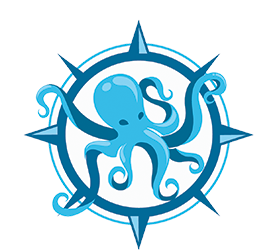🇵🇦 Castle of San Lorenzo at Port Chagres, Panama
overlooks a bay leading into the river Chagres some 100 feet down a cliff. The river leads inland about 2/3 of the way across Panama to Panama City. A dam was built as part of the canal construction around 100 years ago. This created a big inland lake (Lake Gatun). The Panama Canal locks are used to lift boats up into this lake, sail across to the other side and then through a 7 mile long trench in the rock to the locks on the Pacific side where the boats go back down.
By 1534, the Monarchy of Spain had, following its conquest of Peru, established a rainy-season gold route over the isthmus of Panama —Camino Real de Cruces— using mule trains and the Chagres River.
The trail connected the Pacific port of Panama City to the mouth of the Chagres, from whence Peru’s plunder would sail to Spain’s storehouses in the leading Atlantic ports of the isthmus: Nombre de Dios, at first; and, later, Portobelo. The dry-season, overland route—the Camino Real—connected Panama City with those ports directly. Attracted to the treasure, pirates began attacking Panama’s coast around 1560.
Captain Morgan the pirate came along about 300 years ago and captured the fort from the Spanish. He then took his boats and men inland as far as he could. He then found 500 mules and transported guns and canons and supplies another 7 miles to Panama City where he plundered all the gold for himself and men that the Spanish had plundered from local Indians. It is hard to tell who was the bad guy here.
Needles to say that most Spanish fortifications where built and maintained by indigenous, indentured or slave labor.




The Port of Chagres Chart

A design which did NOT work

Fortifications overlooking the Chagres River

The Spanish Canons.

From a Sailing and engineering perspective there is an interesting connecting thread – We are focusing on the activities of Juan Bautista Antonelli and his brother.

Battista Antonelli (or Bautista) (1547–1616) was a military engineer from a prestigious Italian family of military engineers in the service of the Habsburg monarchs of Austria and Spain (Philip II) worked with his older brother on projects in Oran, Algeria and Spain.
His works sometime with the help of his brother can easily be divided into two well-defined and different periods: in the first, from 1560 -1580 onward dedicated to fortifications and defenses on the Levantine coasts and ports of North Africa with his first fortification is in Cartagena de Levante dated 1562 and signed by him followed by Castillo de Santa Bárbara in Alicante, Peñiscola and the African ports of Oran and Mazalquivir.
In 1580 Felipe II occupied Portugal and incorporated it into his kingdom. It was a relatively quick military operation and without confrontations on the battlefields because the action was more of a peaceful occupation than a fought conquest. Felipe II commissioned Juan Bautista Antonelli to find solutions for the easy movement of the troops, prepare the roads and smooth the rough spots of the terrain to speed up the transfer of supplies, supplies and armaments. The topography, however, was rugged and rugged; bad roads and with various rough edges difficult to overcome. Hence the idea of river navigation and the conveniences it represented for the transfer of heavy equipment arose.
The second period of work in the Americas
In 1581 Antonelli was commissioned by the king to build a fortress along the Straits of Magellan ( utter failure), to protect this vital sea lane from attacks by English privateers. From 1582-1584 he designed and built the Castle at Fortaleza in Brazilian and in 1586 he was commissioned to build fortifications for the city of Cartagena in Colombia.
Using the latest military technology of the time, he designed the city’s renowned defenses, the San Felipe de Barajas Castle, the San Sebastián de Pastelillo Fort and the San Fernando Fort. He then set sail for Havana. In Havana he designed the fortifications which culminate at the fortress of El Morro (Los Tres Reyes).
An finally he returned to Spain and even worked on the fortresses in Gibraltar.






